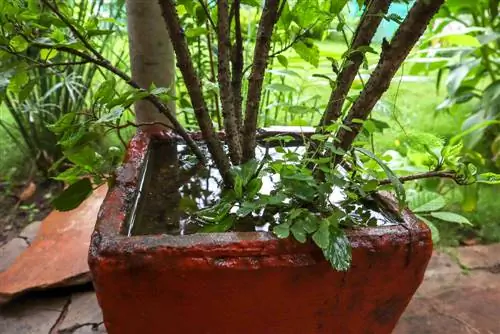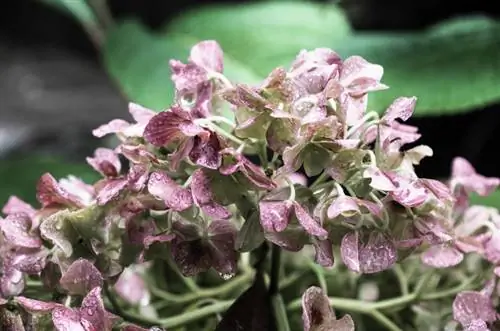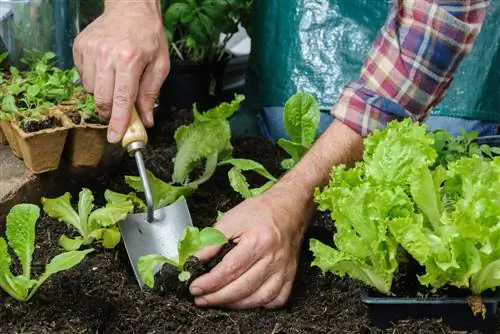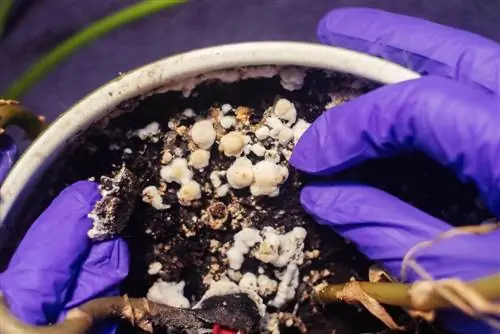- Author admin [email protected].
- Public 2023-12-16 16:46.
- Last modified 2025-01-23 11:22.
Don't pay attention once and the potted plant is watered over. Waterlogging should not be a permanent condition, because the roots rot in the muddy substrate. Read here the best tips for effective immediate measures if potting soil has become too wet.
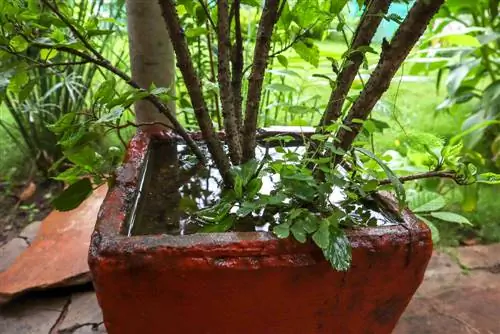
What to do if potting soil gets too wet?
If potting soil is too wet, you should absorb excess water with tampons, pot the plant, remove wet soil, cut off rotten roots and let the plant dry on a rack. Then replant the pot, create drainage and fill with clay granules or expanded clay.
What to do if potting soil is too wet?
TheTampon trick is the best immediate measure if potting soil is too wet. Simply insert one or more tampons deep into the substrate and wait until the pulp has absorbed the excess water. You can also do this:
- Unpot the plant, remove wet potting soil, cut off rotten roots.
- Let the root ball dry on a rack.
- Pour out the flower pot and saucer.
- Spread the pottery shards as a 2 cm high drainage on the bottom of the pot.
- Put the dried plant in the flower pot.
- Fill the cavities around the root ball with clay granules or expanded clay.
How do I know that potting soil is too wet?
You can tell that potting soil is too wet by noticeably moist soil, an unpleasant smell and mold formation on the top layer of soil. Afinger testclears up any remaining doubts. Insert your index finger 2 cm deep into the substrate. If the soil feelsmuddy, it is too wet. If leaves turn brown and hang limply, this is usually an indication of waterlogging and not dryness.
How can I prevent potting soil from getting too wet?
With the rightplanting techniqueand knowledgeablewatering method after finger testing, you can successfully prevent potting soil from becoming too wet. This is how it works:
- Before planting, cover the bottom of the pot 2-5 cm high with drainage made of gravel, lava granules or clay shards so that excess irrigation water can drain away better.
- Do not water plants until the top 2 cm of soil feels dry.
- Remove houseplants from the planter to water.
- Pour excess water out of the saucer after 10 to 20 minutes.
- Insert the moisture meter into the substrate and read the watering requirement.
Tip
Recycle potting soil that is too wet cleverly
You can easily reuse used potting soil that has been poured over. Dispose of the wet substrate in the compost. It is best to spread the wet potting soil as a thin layer between wood cuttings, autumn leaves, fruit and vegetable waste. Busy compost worms and microorganisms take care of the recycling and transform the previously too wet potting soil into wonderfully fragrant humus for bed, balcony and house plants.

